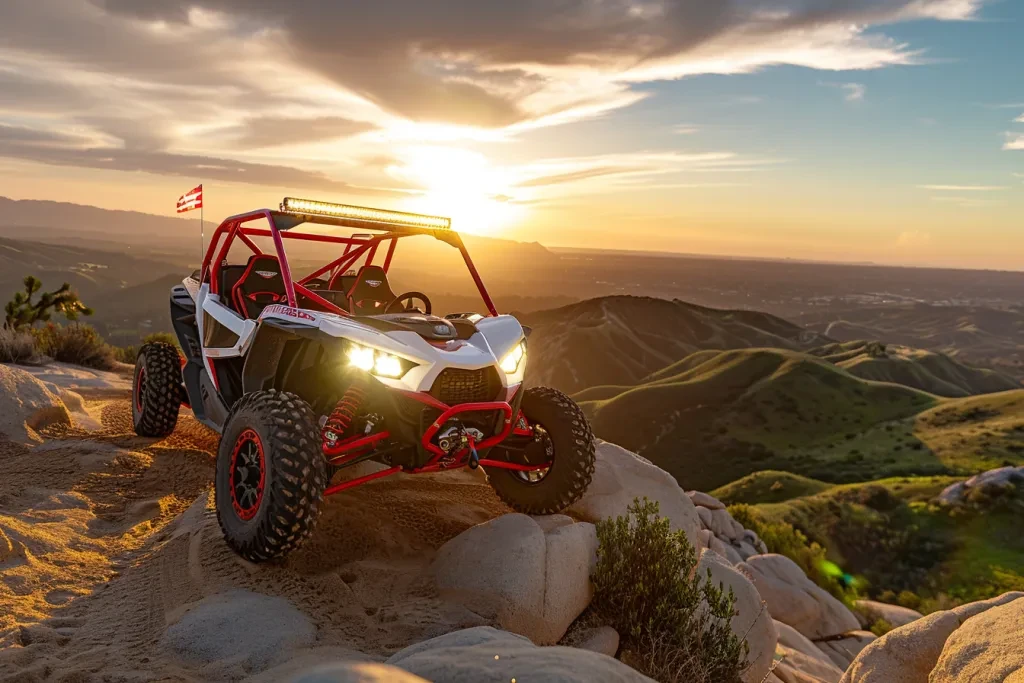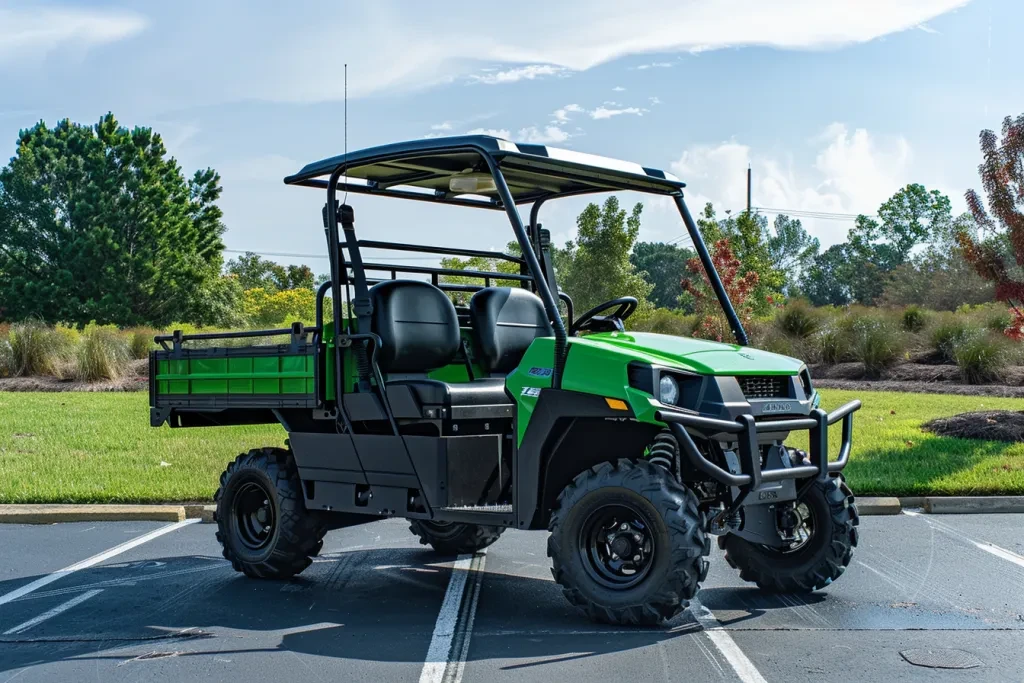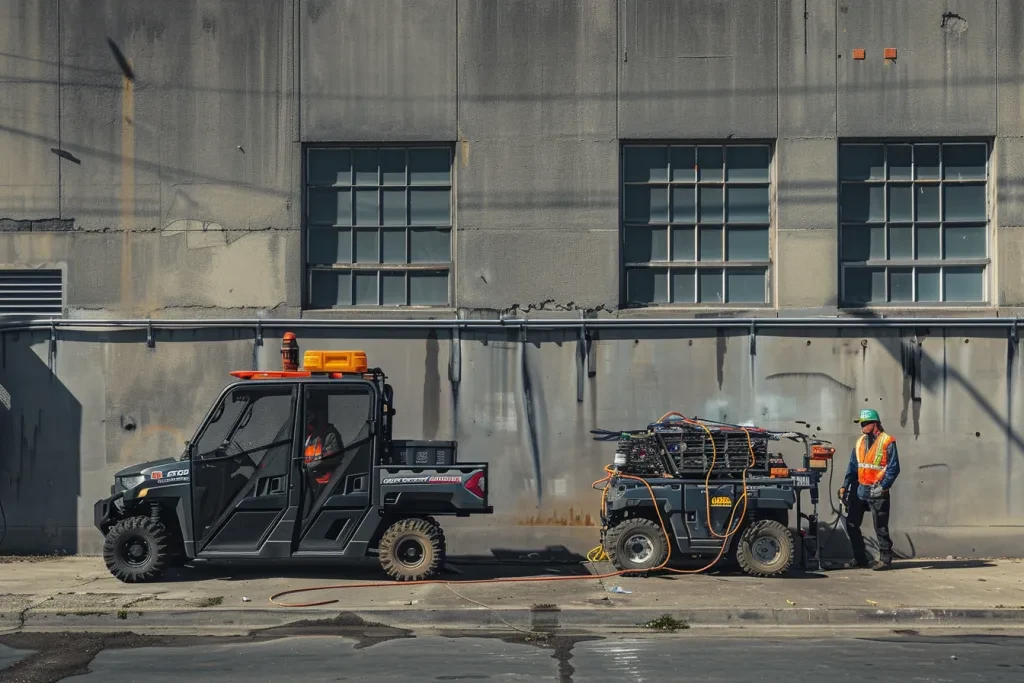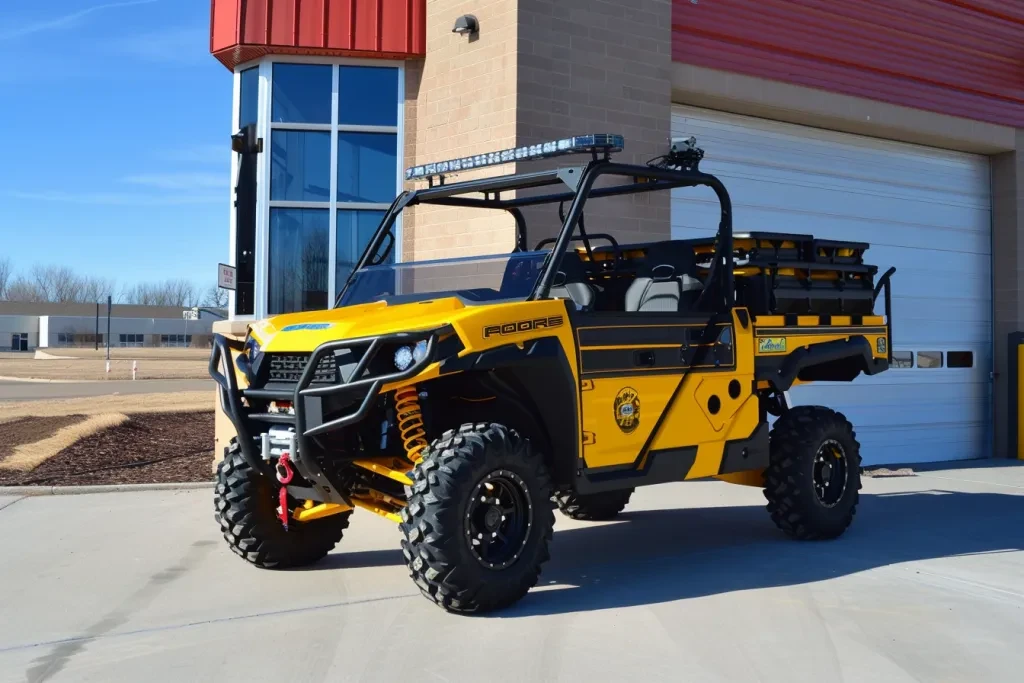Utility Terrain Vehicles (UTVs) have surged in popularity, offering unparalleled versatility, durability, and performance. These powerful machines are designed to conquer a variety of terrains, making them a favorite among adventurers, farmers, and outdoor enthusiasts. This guide delves into the essential aspects of UTVs, from their design and functionality to maintenance tips and the latest technological advancements. Whether you’re a seasoned rider or considering your first purchase, this article will equip you with the knowledge to navigate the world of UTVs confidently.
Table of Contents:
– Understanding UTVs and their applications
– Key features to consider when choosing a UTV
– Maintenance tips for long-lasting performance
– Technological advancements in UTV design
– How to choose the right UTV for your needs
Understanding UTVs and their applications

UTVs, also known as side-by-sides, are engineered for both work and play. Unlike their ATV cousins, UTVs offer seating for two or more passengers, making them ideal for group adventures. Their robust design enables them to tackle a wide range of tasks, from hauling heavy loads on farms to navigating rugged trails in the wilderness. The versatility of UTVs extends to various industries, including agriculture, emergency services, and recreational sports, showcasing their adaptability to different environments and needs.
The applications of UTVs are vast, reflecting their design to perform under challenging conditions. For instance, in agriculture, they transport goods and equipment across large properties efficiently. In recreational settings, they provide exhilarating experiences on off-road trails. Understanding the specific applications and environments where UTVs excel can guide potential buyers in selecting a model that aligns with their activities and goals.
Choosing the right UTV involves considering the vehicle’s intended use. Whether it’s for leisurely rides through the countryside, competitive racing, or heavy-duty work tasks, each activity demands specific features and capabilities. This section has highlighted the importance of recognizing the diverse applications of UTVs, setting the stage for a deeper exploration of their features.
Key features to consider when choosing a UTV

When selecting a UTV, several critical features warrant attention. The engine size and power output directly impact the vehicle’s performance, especially in demanding conditions. A more powerful engine can provide the necessary thrust for steep inclines and heavy towing tasks. However, fuel efficiency and environmental impact are also important considerations, especially for those conscious of their carbon footprint.
The suspension system of a UTV plays a pivotal role in its ability to navigate rough terrain smoothly. Advanced suspension systems can absorb shocks and provide a comfortable ride, even on the most rugged trails. This feature is particularly important for those planning to use their UTVs for extended periods, as it can significantly affect rider fatigue and overall vehicle durability.
Safety features are another crucial aspect of UTV design. Roll cages, seat belts, and protective gear are essential for protecting passengers from injuries. As UTVs are often used in challenging environments, investing in a model with comprehensive safety features is wise. This section underscores the importance of engine performance, suspension quality, and safety features in the selection process, guiding readers toward making informed decisions.
Maintenance tips for long-lasting performance

Maintaining a UTV is key to ensuring its longevity and reliability. Regular oil changes, for instance, are critical for keeping the engine running smoothly. Using high-quality oil and replacing it according to the manufacturer’s recommendations can prevent engine wear and extend the vehicle’s life.
Tire maintenance is equally important. Regularly checking tire pressure and tread depth can prevent accidents and improve the UTV’s handling and fuel efficiency. Additionally, inspecting the suspension and brakes for wear and tear can help avoid potential safety issues, ensuring that the UTV remains in optimal condition.
Storing the UTV properly when not in use can also protect it from the elements and prevent rust and corrosion. A covered, dry space is ideal for prolonging the vehicle’s aesthetic and functional integrity. This section has provided practical tips for maintaining a UTV, emphasizing the importance of regular checks and proper storage for enhancing performance and safety.
Technological advancements in UTV design

The world of UTVs is constantly evolving, with manufacturers incorporating the latest technologies to improve performance, safety, and user experience. Electric UTVs, for example, are gaining popularity for their environmental benefits and reduced operational costs. These models offer a quieter, emission-free alternative to traditional gas-powered vehicles, appealing to environmentally conscious consumers.
Advanced navigation systems and connectivity features are also transforming the UTV experience. GPS-enabled devices can help riders explore new trails with confidence, while Bluetooth connectivity allows for seamless integration with smartphones and other devices. These technological advancements not only enhance the enjoyment of riding a UTV but also contribute to safer and more efficient operations.
Innovations in materials and manufacturing processes have led to lighter, more durable UTVs. Composite materials and advanced alloys are being used to reduce weight without compromising strength, improving fuel efficiency, and making the vehicles easier to handle. This section has explored the latest technological trends in UTV design, highlighting how they contribute to the vehicles’ improved functionality and appeal.
How to choose the right UTV for your needs

Choosing the right UTV requires careful consideration of your specific needs and preferences. Assessing the primary use of the vehicle, whether for work, recreation, or a combination of both, is a crucial first step. This assessment will guide you in prioritizing features such as power, durability, and comfort.
Budget is another important factor. UTVs come in a wide range of prices, with more feature-rich models commanding higher costs. Determining a budget early in the selection process can help narrow down the options and focus on vehicles that offer the best value for your investment.
Finally, conducting thorough research and test-driving several models can provide valuable insights into the performance and feel of different UTVs. Engaging with a knowledgeable dealer and tapping into the experiences of current UTV owners can also aid in making an informed decision. This section has outlined a structured approach to choosing the right UTV, emphasizing the importance of aligning the selection with individual needs, budget, and personal preferences.
Conclusion:
UTVs offer a unique blend of performance, versatility, and fun, catering to a wide range of activities and industries. Understanding the essential aspects of UTVs, from their applications and key features to maintenance and technological advancements, is crucial for anyone considering a purchase. By carefully assessing your needs, prioritizing features, and staying informed about the latest trends, you can select a UTV that provides long-lasting satisfaction and adventure. Whether for work or play, the right UTV can be a valuable and enjoyable addition to your outdoor equipment.




